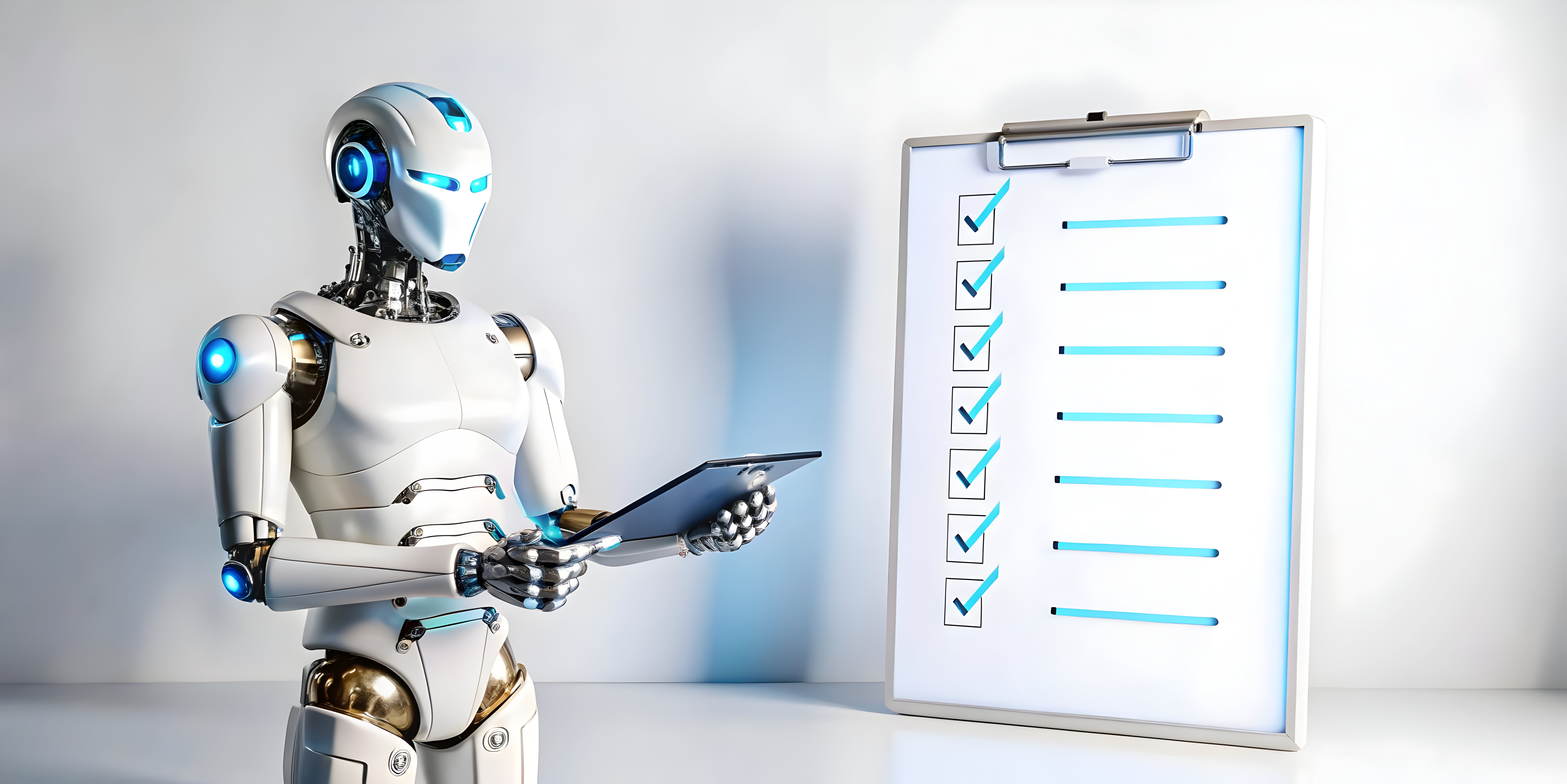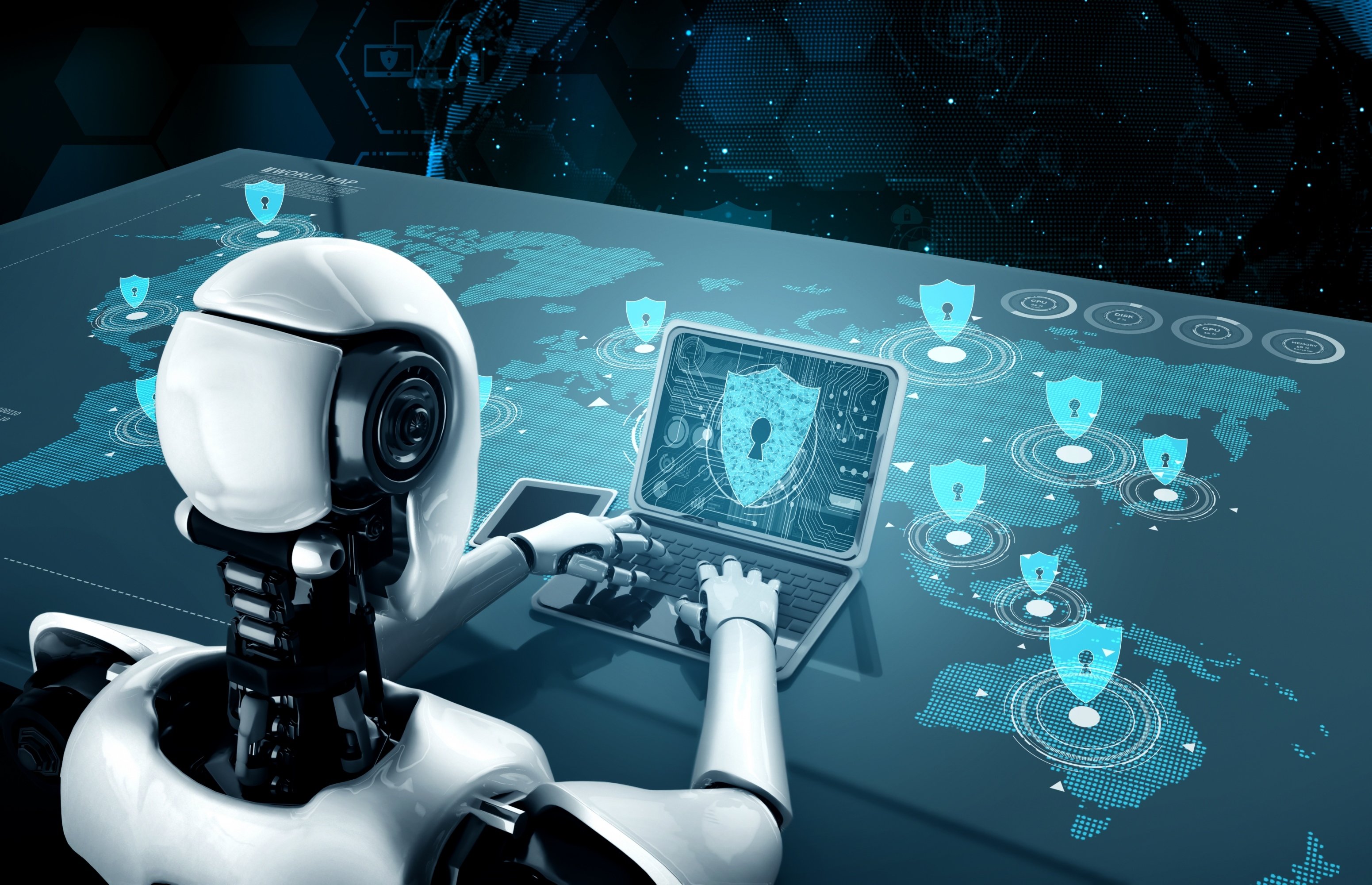Atlas Systems Named a Representative Vendor in 2025 Gartner® Market Guide for TPRM Technology Solutions → Read More

Robotic Process Automation Risks: Mitigation and Third-Party Risk Management


8 min read | Last Updated: 26 Sep, 2025
Robotic process automation (RPA), a technology that utilizes robots to automate repetitive tasks, has become increasingly popular as organizations transition to digital operations. According to a 2022 McKinsey Global Industrial Robotics Survey, many industrial firms plan to dedicate 25% of their capital budgets to automation over a five-year period.
Robotic process automation can bolster your operational efficiency, but it comes with unique risks. Understanding and mitigating these risks is vital for protecting sensitive data and intellectual property, preventing financial and reputational damage, ensuring regulatory compliance, maintaining business continuity, and preserving customer trust.
This guide on robotic process automation risks highlights common implementation challenges and provides guidance on mitigating security concerns for safe adoption.
What is Robotic Process Automation, and Why Does It Matter?
Robotic process automation is a technology controlled by scripts and software algorithms that helps organizations automate repetitive tasks. RPA bots can automate rules-based digital tasks by mimicking human actions on software and systems. These tasks include data entry, report generation, transaction processing, response triggering, file management, and communicating with other digital systems.
RPA bots range from simple website chatbots to advanced bots that can automate credit card processing and fraud detection. Because the bots often transfer sensitive data between systems, they can cause security failures such as data leakage and fraud without proper implementation.
RPA is critical in business operations because it enables organizations to work faster and at a lower cost. In the supply chain sector, it is used for inventory management, order processing, and tracking shipments. In finance, it streamlines processes like accounts payable, receivable, and general ledger entries.
Organizations typically start with small RPA pilot programs and then move to more comprehensive programs. Large-scale deployments involve numerous software bots that handle vast numbers of routine tasks.
Top Security Risks in RPA Implementation
While robotic process automation offers efficiency, speed, and cost savings, it also introduces new security challenges your organization can’t afford to ignore. Here are the most common risks:

1. Data exposure
RPA bots often handle sensitive information, and if improperly configured or left unsupervised, they can be intercepted by attackers who may steal or destroy crucial information. If an RPA bot accidentally transfers sensitive information to the wrong destination, personally identifiable information (PII) may be exposed to malicious actors, potentially leading to privacy violations and fines for your company.
2. Bot impersonation
RPA bots often have elevated privileges and use the same credentials as human employees or service accounts, and cybercriminals can impersonate the bots and access the credentials. Once inside, they can steal or manipulate data and disrupt automated workflows, which can be difficult to detect because the activities seem to come from an approved bot. Giving each bot a unique identity can help prevent impersonation. Additionally, ensure their credentials are secure and encrypted, implement multi-factor authentication, and continuously monitor bot activities to detect suspicious behavior.
3. Unsecured software and third-party integrations
RPA bots don’t work in isolation and are often connected to other applications, cloud services, or third-party tools to boost functionality. An organization may link its RPA bots to payroll software, CRM systems, or analytics dashboards. If these software tools or integrations aren’t fully secured, they can become an open door, allowing attackers to enter and misuse the bots’ trusted access. For example, if a bot transfers data via an unsecured external program, a malicious actor may interfere with the workflow or alter the data.
4. Insufficient logging and monitoring
As RPA bots work quietly in the background, their actions must be properly logged and monitored to ensure unusual or malicious activity doesn’t go unnoticed. If your system doesn’t record enough details about what the bots are doing, you won’t receive alerts when something suspicious happens, and will be unable to investigate or respond to them. Unauthorized actions or bot tampering may go unnoticed for long periods. You must have comprehensive logs to track what tasks bots perform, when, and where.
5. Oversights in rapid deployment
If an organization rushes the RPA rollout, it may overlook important security and governance steps, creating security gaps that attackers or employees can exploit. Skipping thorough testing, not having role-based access controls, or failing to document processes properly can leave bots with excessive permissions or weak credentials.
Reduce the risk by following a secure deployment framework, performing thorough testing (simulating real-world scenarios), and deploying RPA bots in phases (incremental rollouts). It’s also vital to perform security audits after launch to catch oversights early.
Best Practices to Mitigate RPA Security Risks
The very bots that automate repetitive tasks can become major security liabilities if not properly managed. Follow these best practices to mitigate robotic process automation risks:

1. Apply the ‘least privilege’ principle
Give each bot the minimum level of access it needs to complete its specific tasks, nothing more. Restricting bot permissions to the essentials limits the potential damage of a security breach. Even if attackers gain access, their scope will be limited.
2. Protect log integrity
Activity logs are the primary source of truth for monitoring bot actions, detecting security incidents, and conducting investigations. Your security team must ensure that all logs generated by RPA bots are accurate, complete, and tamper-proof. Store the logs separately from the RPA system and apply strict access controls to prevent unauthorized modification or deletion. They should capture detailed information and system changes to provide a clear audit trail. Implement automated monitoring and regular reviews to identify suspicious activities and anomalies early.
3. Conduct Third-Party Risk Management (TPRM)
Organizations in highly regulated industries like finance, healthcare, manufacturing, or government are responsible for vulnerabilities introduced by third parties, even if the issues are outside their direct control. You must continually assess, monitor, and manage the security posture of the third parties connected to your RPA system. Make sure vendors follow the same security and compliance standards you apply internally. If you fail to do this, your well-secured RPA platform may be compromised by a vulnerable API, an unpatched application, or a compromised software provider.
4. Regularly check RPA scripts
RPA bots use scripts to automate tasks such as data transfer, report generation, or application interaction. But as business systems change, processes evolve, or software updates occur, the scripts may become outdated, introducing errors or exposing vulnerabilities. Regularly check scripts to ensure they remain secure and align with your current business and compliance requirements. You’ll be able to identify and fix vulnerabilities, errors, or unauthorized changes that may be exploited by attackers or disrupt operations.
5. Implement Safe-Fail mechanisms
Safe-Fail is a standard in security and control systems that ensures automated systems prevent failures from compromising the confidentiality, integrity, or availability of critical systems and data. When an RPA bot encounters a malfunction or security threat, it should fail safely, halting operations and preventing further damage or unauthorized access. For example, instead of a bot continually altering a database or reprocessing a faulty transaction, it should shut down or trigger an alert. This prevents the error from leading to data corruption or financial fraud.
How TPRM Strengthens RPA Security
Your company may have a robust internal security framework, but it can be rendered useless by a weak link in the supply chain. A single weakness in a partner’s system can create an entry point for attackers. Here’s how TPRM strengthens RPA security.
1. Closes vendor security gaps
Your vendors, suppliers, and partners may not follow your organization’s security standards. If an RPA bot utilizes an insecure cloud service or connects to an unpatched vendor API, attackers can exploit these vulnerabilities to infiltrate your systems. Regularly check vendors’ security certifications (like SOC 2 or ISO 27001) and their data handling practices. They are less likely to become a security liability.
2. Ensures compliance in highly regulated industries
Regulatory compliance frameworks, such as HIPAA, GDPR, and PCI DSS, have strict rules in place to ensure that sensitive data is protected from unauthorized access, breaches, or misuse. Strong third-party risk management ensures vendors follow the same regulatory standards, perform regular audits, and enforce contractual obligations to protect sensitive information.
3. Continuous monitoring ensures robust third-party security
Continuous vendor monitoring provides real-time visibility into a vendor's changing risk profile, enabling proactive identification and mitigation of RPA risks. You can use frameworks like NIST, ISO 27036, or SP 800-161 to monitor vendor security. Vulnerability scans, regular audits, and penetration tests can help you identify potential third-party weaknesses that could compromise RPA workflows and address them before they are exploited.
4. Builds resilience against supply chain attacks
In August 2025, hackers compromised the Salesloft Drift app, a tool connecting Drift’s AI chatbot to Salesforce, accessing sensitive customer data. Organizations like Cloudflare, Palo Alto Networks, and others using Salesforce with the Drift app were impacted. Supply chain attacks have increased significantly in recent years. TPRM mitigates this risk in RPA by enforcing vendor code reviews, requiring security certifications, and establishing contingency plans in the event of a vendor compromise.
Strengthen Your RPA Supply Chain with ComplyScore®
Robotic process automation eliminates mundane, repetitive tasks by performing them quickly, efficiently, and cost-effectively. But its implementation comes with additional security risks. If you don’t build security into the implementation process, these same strengths can turn into vulnerabilities.
ComplyScore® by Atlas Systems enhances RPA security by automating and centralizing third-party risk governance. The software continuously monitors external systems integrated into your RPA workflows for compliance, cybersecurity posture, and performance standards. AI risk scoring, compliance tracking, and real-time vendor monitoring help you detect and remediate vendor vulnerabilities before they are exploited.
Take control of your vendor risks with ComplyScore®—schedule a personalized demo today.
Frequently Asked Questions
1. Is RPA secure for handling sensitive data?
Yes, RPA can be secure for handling sensitive data, but it all depends on how the bots are designed, deployed, and governed. To make RPA secure, apply the same cybersecurity standards you use for other critical IT systems.
2. Which industries are most vulnerable to RPA risks?
The industries most vulnerable to RPA risks include finance, healthcare, government, manufacturing, energy, and retail.
3. Can RPA compliance be automated?
Yes, RPA compliance can be automated because compliance often involves repetitive, rule-based tasks, such as data entry, reporting, monitoring, and audit preparation.
.png?width=869&height=597&name=image%20(5).png)

.png?width=300&height=175&name=Rectangle%2034624433%20(2).png)







.png?width=645&height=667&name=Widgets%20(2).png)












.webp)

.png)












